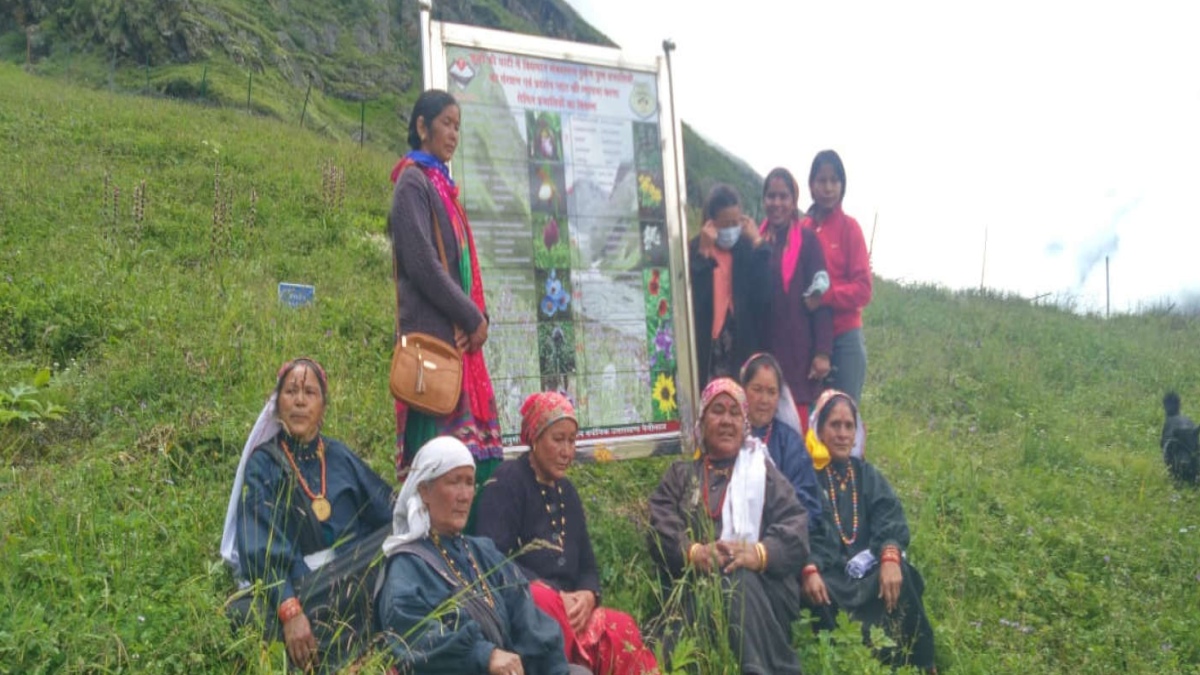


India’s highest altitude herbal park, located at the height of 11,000 feet near the Indo-China border in Uttarakhand’s Chamoli district, was inaugurated on Saturday. Under the central government’s Compensatory Afforestation Fund Act (CAMPA), the Uttarakhand forest department’s research wing established the park on 3 acres of land donated by Mana Van panchayat.
As per officials, this is under the central government’s CAMPA scheme, the Uttarakhand forest department’s research wing established the park on three acres of land donated by Mana Van panchayat.
According to Chief Conservator of Forest (research) Sanjiv Chaturvedi, the herbal park comprises roughly 40 species found in high altitude alpine locations in the Himalayan region. According to the International Union for Conservation of Nature (IUCN) red list and the State Biodiversity Board, many species are endangered or threatened. It also contains several valuable medicinal herbs, added Chaturvedi.
The park is divided into four segments. The Badri Tulsi, Badri Ber, Badri Tree, and the sacred tree of Bhojpatra are linked with Badrinath (Lord Vishnu) in the first section. Badri Tulsi, scientifically known as Origanum Vulgare, grows in this location and is vital to Lord Badrinath’s offerings. Various studies have shown that it has a wide range of therapeutic properties. According to Chaturvedi, Badri Ber, also known as Hippophae Salicifolia and locally as Amaesh, is another nutrient-dense fruit that is extensively consumed. The second section is dedicated to Ashtavarga species, which include Riddhi (Habenaria Intermedia), Vriddhi (Habenaria Edgeworthii), Jeevak (Malaxis Acuminata), Rishbhak (Malaxis Muscifera), Kakoli (Fritillaria Roylei), Ksheer Kakoli (Lilium Polyphyllum), Maida (Polygonatum Verticillatum). There are the most important ingredients of Chyawanprash, he said.
While talking to The Daily Guardian Chaturvedi said that four herbs are from the lily family, and four are from the orchid family. The third part contains Saussurea species, including Brahmakamal (Saussurea Obvallata), also Uttarakhand’s state flower. Phemkamal (Saussurea Simpsoniana), Nilkamal (Saussurea Graminifolia), and Koot (Saussurea Graminifolia) are some of the other Saussurea species found in the park.
He further added that the fourth portion includes various alpine plants, including Ateesh, Meethavish, Vankakdi, and Choru, which are all essential medicinal herbs in high demand. In addition, Thuner (Taxus Wallichiana) trees, whose bark is used in the manufacture of cancer medications, Tansen, and Maple trees have been planted in the park, he added.